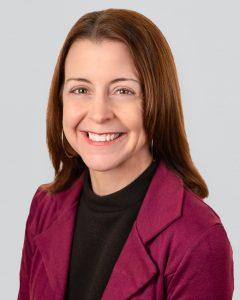FOCUS
Teaching is an art - and a science
By Suzanne Bouffard
Categories: Instructional materials/curriculum, Reaching all studentsDecember 2018
Vol. 39 No. 6
Is teaching an art or a science? It’s a little of both. There is artistry in the way teachers connect with students and foster their understanding. At the same time, there is a science to teaching and learning, an evidence base on which to build our approaches to developing students’ knowledge, skills, and competencies.
We know more than ever about students’ learning trajectories and how new learning builds on prior knowledge. Learning is cumulative. Gaps in knowledge and skills become cracks in the foundation of lifelong success.
Sadly, only some students in the U.S. have access to rigorous, grade-appropriate content and assignments. A recent study from TNTP found that students from low-income families spent half as much time on grade-appropriate assignments as those from higher-income families, and 38% of classes serving mostly students of color did not use a single grade-level assignment over the course of one week (TNTP, 2018).
Across five diverse districts, students got good grades on assignments 71% of the time, but met grade-level standards on those same assignments only 17% of the time, according to TNTP’s ratings. This pattern sets up a gap in college readiness that may not be immediately obvious. But when students get to college, the cracks spread.
High-quality curricula and instructional materials can help close these gaps, particularly when they are aligned with learning standards for what students should know and be able to do. They can level the playing field — if teachers have the support to implement them well. Truly effective application requires opportunities for deep thinking about materials and practice using them.
That’s why this issue of The Learning Professional — and much of Learning Forward’s current work — focuses on the intersection of high-quality materials and high-quality professional learning. As educational consultant Emily Freitag points out in her article on p. 40, “the implementation of quality curricular tools isn’t as easy as completing a purchase order.”
For this issue’s Focus section, guest editor Lynn Olson curated a set of articles on professional learning throughout the stages of adopting, implementing, and reflecting on instructional materials. David Steiner kicks off the section with a review of the research on why instructional materials matter. Jody Guarino and her colleagues from the Newport-Mesa (California) district then share their innovative process for fostering teacher ownership of curriculum decisions via professional learning.
Articles by Emily Freitag of Instruction Partners and Barbara Davidson and Susan Pimentel from StandardsWork highlight elements of effective support in districts that are prioritizing high-quality materials. Katherine McNeill and Brian Reiser illustrate the benefits of encouraging teachers to learn about new science materials in a participatory way that mirrors the way they are expected to engage students.
Does the science of evaluating and implementing high-quality curriculum diminish the art of teaching? As Learning Forward member Whitney Oakley says on p. 10, “Even though teachers have the curriculum resources in their hands, they still have to think through and reflect on their instructional delivery. This is where the autonomy is, the art of teaching.”
Throughout the Focus section, we highlight the voices of teachers about how they are benefitting from a focus on high-quality materials in high-quality professional learning.
We wrap up the issue with an infographic, a visual reminder of both the benefits and challenges that lie at the intersection of instructional materials and professional learning. The numbers make a compelling case that there is room for improvement. We at Learning Forward are ready to tackle the challenges with you.
References
TNTP. (2018). The opportunity myth. New York, NY: Author.

Suzanne Bouffard is senior vice president of communications and publications at Learning Forward. She is the editor of The Learning Professional, Learning Forward’s flagship publication. She also contributes to the Learning Forward blog and webinars. With a background in child development, she has a passion for making research and best practices accessible to educators, policymakers, and families. She has written for many national publications including The New York Times and the Atlantic, and previously worked as a writer and researcher at the Harvard Graduate School of Education. She has a Ph.D. in developmental psychology from Duke University and a B.A. from Wesleyan University. She loves working with authors to help them develop their ideas and voices for publication.
Categories: Instructional materials/curriculum, Reaching all students
Recent Issues
LEARNING DESIGNS
February 2025
How we learn influences what we learn. This issue shares essential...
BUILDING BRIDGES
December 2024
Students benefit when educators bridge the continuum of professional...
CURRICULUM-BASED PROFESSIONAL LEARNING
October 2024
High-quality curriculum requires skilled educators to put it into...
LEARNING TO PIVOT
August 2024
Sometimes new information and situations call for major change. This issue...












